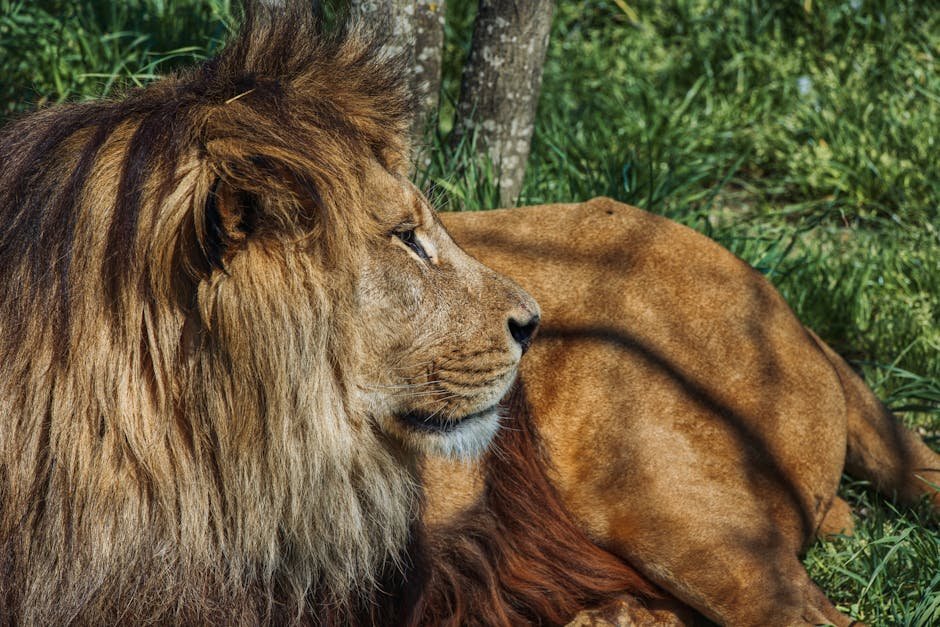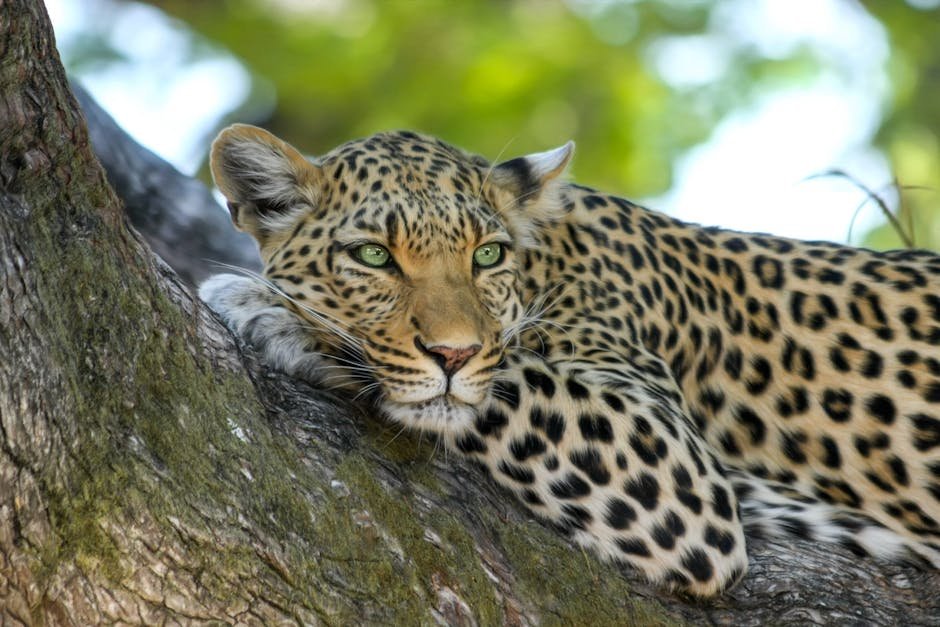Understanding the social behaviors of big cats has intrigued scientists and cat enthusiasts alike. While these majestic creatures are often portrayed as solitary hunters, the reality is more complex. Some big cats exhibit surprisingly social behaviors, while others prefer solitude. This article explores the factors that contribute to these differences in social behavior among big cats.
The Solitary Nature of Most Big Cats

When we think of big cats, images of lone lions or elusive leopards often come to mind. Most big cats, such as tigers and jaguars, are solitary by nature. This solitary behavior allows them to maintain large territories, ensuring they have enough resources to survive. By hunting alone, they reduce competition for food, which can be scarce in their natural habitats. This solitary approach also minimizes the risk of conflict with other predators. However, being solitary doesn’t mean they’re completely antisocial. These cats do communicate and interact with others, especially during mating season or when raising young ones.
The Exception: Social Lions

Lions are the most social of the big cats, living in structured groups known as prides. A pride typically consists of several related females, their offspring, and a few males. This social structure offers multiple advantages. By living in a group, lions can defend their territory more effectively against intruders. They can also work together to hunt larger prey, increasing their chances of a successful kill. This cooperative behavior is unique among big cats and sets lions apart from their more solitary cousins.
Influence of Prey and Environment

The availability of prey and the environment in which a big cat lives can significantly influence its social behavior. In areas where prey is abundant, big cats may be more tolerant of each other’s presence. Conversely, in regions where food is scarce, they may become more territorial and solitary. The environment also plays a role; dense forests may encourage solitary behavior, while open savannas might support social structures. These adaptations ensure that big cats can thrive in diverse habitats.
The Role of Gender in Social Dynamics

Gender plays a crucial role in the social dynamics of big cats. Female big cats, especially those with young, may form temporary groups or alliances for protection and support. Males, on the other hand, are often more territorial and may only tolerate other males if they are part of a coalition, as seen in male lions. These gender-specific behaviors highlight the complex social structures within big cat species, shaped by evolutionary pressures.
Communication Among Big Cats

Communication is essential for any social interaction, and big cats have developed various ways to convey information. Vocalizations, such as roars, growls, and purrs, are common forms of communication. Visual signals, like body posture or facial expressions, also play a role. Scent marking is another critical method, allowing big cats to establish territory and convey reproductive status. These communication methods help big cats navigate their social landscapes, whether they are solitary or part of a group.
Parenting Styles and Socialization
Parenting styles among big cats vary significantly and can influence social behaviors. Female big cats are primarily responsible for raising their young, teaching them essential survival skills. In social species like lions, cubs benefit from the protection and mentorship of pride members. In solitary species, cubs must learn to fend for themselves sooner. These differing parenting styles impact the socialization of young cats, influencing their future interactions.
The Impact of Human Activity

Human activity has a profound impact on the social behaviors of big cats. Habitat loss, poaching, and human-wildlife conflict can disrupt traditional social structures. In some cases, big cats may be forced to adapt to new environments, altering their social behaviors. Conservation efforts aim to protect these majestic animals and preserve their natural behaviors. Understanding these impacts is crucial for developing effective conservation strategies.
Genetic Factors and Social Behavior

Genetics also play a role in the social behavior of big cats. Researchers have identified specific genes that may influence social tendencies. By studying these genetic markers, scientists hope to gain insights into the evolutionary history of big cats and the development of their social behaviors. This research could lead to a better understanding of how social behaviors have evolved in different species.
Learning from Other Animal Species

Studying other animal species can provide valuable insights into the social behaviors of big cats. For example, social structures in wolves or primates may offer clues about the evolution of group living. By comparing these species, researchers can identify common factors that promote sociality and apply these findings to understand big cats better.
Climate Change and Social Adaptations
Climate change is an emerging factor that could influence the social behaviors of big cats. As habitats shift due to changing temperatures and weather patterns, big cats may need to adapt their social structures to survive. For instance, changes in prey availability could lead to altered group dynamics. Understanding these potential adaptations is crucial for predicting how big cats will cope with a changing world.
The Role of Captivity in Social Behavior

Captive environments can significantly impact the social behaviors of big cats. In zoos or sanctuaries, big cats may live in closer proximity to others than they would in the wild. This can lead to the development of new social behaviors or stress-related issues. Understanding the effects of captivity on social behavior is essential for improving the welfare of big cats in human care.
Technology and Social Behavior Research

Advancements in technology have revolutionized the study of big cat social behaviors. Tools like GPS collars and camera traps allow researchers to track and observe big cats in their natural habitats. These technologies provide valuable data on movement patterns, social interactions, and territory use. By leveraging these tools, scientists can gain deeper insights into the social lives of big cats.
Conservation and Social Structures
Conservation efforts often focus on preserving the social structures of big cats. Protecting habitats, reducing human-wildlife conflict, and promoting sustainable practices are all critical components of conservation strategies. By maintaining stable social structures, conservationists can help ensure the long-term survival of big cat populations. This holistic approach considers the complex social dynamics of these animals and aims to preserve their natural behaviors.
The Influence of Diet on Social Behavior
Diet plays a significant role in shaping the social behaviors of big cats. Carnivorous diets require efficient hunting strategies, which can influence whether a species is more solitary or social. For instance, lions often hunt in groups to take down large prey, while leopards rely on stealth and solitary hunting techniques. These dietary preferences impact social structures and interactions within big cat species.
Seasonal Changes and Social Behavior

Seasonal changes can also affect the social behaviors of big cats. During mating seasons, big cats may become more social as they seek out partners. Conversely, during harsh seasons with limited resources, they may become more territorial and solitary. These seasonal fluctuations highlight the adaptability of big cats and their ability to adjust their social behaviors based on environmental conditions.
Interactions with Other Predators

Big cats often share their habitats with other predators, leading to complex interactions. Competition for food and territory can influence social behaviors, as big cats may need to assert dominance or avoid conflicts. These interactions can also lead to unique social adaptations, allowing big cats to coexist with other predators in their ecosystems.
The Evolutionary History of Big Cats

The evolutionary history of big cats provides insights into their current social behaviors. By studying the fossil record and genetic data, scientists can trace the development of social structures over time. Understanding this evolutionary history helps researchers identify the factors that have shaped the social behaviors of big cats and predict future trends.
The Future of Big Cat Social Behavior Research

Research into the social behaviors of big cats is an ongoing field of study with many exciting developments on the horizon. As new technologies and methodologies emerge, researchers will continue to uncover the complexities of big cat social structures. This research is vital for informing conservation efforts and ensuring the survival of these iconic animals in a rapidly changing world.
Conclusion

The social behaviors of big cats are a fascinating and complex topic, shaped by a multitude of factors. From environmental influences to genetic predispositions, each species exhibits unique social tendencies. Understanding these behaviors is crucial for conservation efforts and enhancing our appreciation for these magnificent creatures. As research continues to evolve, we gain a deeper understanding of why some big cats are more social than others, ensuring their preservation for future generations.
Hi, I’m Bola, a passionate writer and creative strategist with a knack for crafting compelling content that educates, inspires, and connects. Over the years, I’ve honed my skills across various writing fields, including content creation, copywriting, online course development, and video scriptwriting.
When I’m not at my desk, you’ll find me exploring new ideas, reading books, or brainstorming creative ways to solve challenges. I believe that words have the power to transform, and I’m here to help you leverage that power for success.
Thanks for stopping by, Keep coming to this website to checkout new articles form me. You’d always love it!






